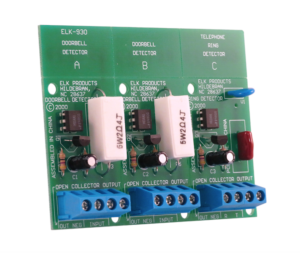Hearing impaired homeowners have unique needs that a smart home integrator needs to understand to create a smart home that is optimized for their unique needs. Leveraging technology that translates audible notifications into visual and tactile ones is critical to provide a safe and convenient living situation. Different people will have different levels of impairment and that needs to be taken into account to properly design a smart home for them.
Similar to a visual impairment, a hearing impairment can fall across a wide range of severity from mild hearing loss to profound hearing loss, which can entail complete loss of hearing. Because of the wide range of hearing loss that people may have, there isn’t a “one solution fits all” approach for developing smart homes for people who have hearing impairment.
Entertainment Enhancements for People with Hearing Impairment
TV is still a valued form of entertainment in a smart home for people with hearing impairment. Some hearing-impaired people can achieve functional hearing through the use of hearing aids. However, it can still be challenging to hear a TV because of background noise from people talking, a fan operating in the room, or any other ambient sound in the room because it will also be amplified.
An alternative approach is to connect a Bluetooth transmitter to an audio output port on the TV and utilize a hearing aid with built-in Bluetooth connectivity. This allows the wearer to connect directly to the TV audio track and eliminates the need to turn the volume of the TV up, which could be uncomfortable for other family members or even neighbors. For people whose hearing loss is too severe for hearing aids to help, closed captioning provides an alternative to the normal TV soundtrack.
A Bluetooth transmitter can also be plugged into an audio system, and coupled to a hearing aid, to provide music from a variety of sources, including Pandora, Spotify, Apple Music, Amazon Music, Internet radio, phonograph records, CDs, etc.
Smart Home Control
Smart speakers are becoming the primary choice for controlling smart homes. Bluetooth hearing aids can connect to the smart speaker, allowing the user to interact with it as if they didn’t have any impairment.
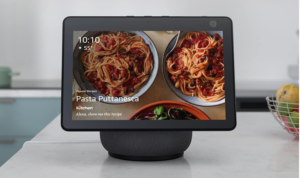
Manufacturers also have added accessibility features for hearing-impaired people to their smart speakers. Amazon, for example, has built a number of features into their Alexa devices for the hearing impaired. For instance, Alexa captioning displays on Echo Show devices provide text captions of audible responses, captions in “near real time” for Alexa calls, and convert audio content of video broadcasts into text.
Alexa’s speaking rate also can be adjusted to make it faster or slower, so it is easier for an individual to understand, and the built-in equalizer can be used to adjust the Alexa devices sound for people with hearing loss at specific audio frequencies
Some people who have been profoundly hearing impaired from birth were not able to develop speech properly and cannot be understood by a smart speaker. “Tap to Alexa” provides a way to create buttons on the screen of an Echo Show device that correspond with audible commands. Through “Tap to Alexa” buttons, you can set a timer, set the wake-up time of the built-in alarm clock, display the weather forecast, turn smart home devices on or off, get a traffic report, and more.
Of course, integrators also need to remember that dedicated touch screens, tablets, and smart phones are still very viable control points for a smart home and can easily be used by someone with hearing loss. But, given the features that smart speaker manufacturers have added to their products to make them more accessible to people with hearing impairment, touch panels, screens, and tablets don’t need to be the exclusive user interface for a smart home for people that are hearing impaired.
Event Notifications for the Hearing Impaired
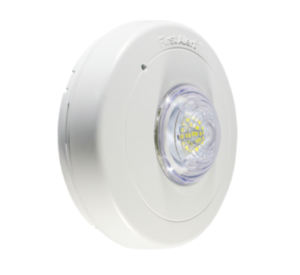
Smoke detectors are one of the most important safety devices in a home. But, no matter how loud the annoying noise they make is, it can go unnoticed by a person who is hearing impaired. The simplest solution is to install smoke detectors that include a strobe.
The BRK SLED177 is a special strobe for their interconnected line of wired smoke, heat and carbon monoxide alarms. It flashes a different light pattern depending on what the kind of alarm being signaled. Alternatively, the siren, or bell, on a security system can also be replaced with a unit that includes both a siren and strobe to provide both audible and visual warnings.
However, all of the above may be ineffective if the hearing-impaired homeowner is asleep. To overcome this issue, a bed shaker can be installed either under the pillow or between the mattress and box spring.
There are a number of different types of bed shakers. A basic model of bed shaker is simply driven by a power supply, which can be plugged into a smart outlet that can be turned on by a smart home processor/hub. Alternatively, a product from SafeAWake could be added to trigger a connected bed shaker when it detects the sound of a smoke alarm.
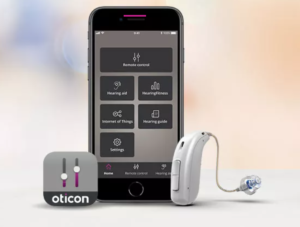
During the day, a smart home also can alert a hearing-impaired homeowner of important events by sending notifications to the person’s smart phone, which can be configured to vibrate when a notification is received and/or by turning on color changing smart bulbs and setting a different color based on the event. Another option is sending a notification to a connected hearing aid.
Oticon and Sonic and offer hearing aids that not only include Bluetooth connectivity but also, through their smart phone apps connect with IFTTT. Through IFTTT spoken notifications can be sent to the hearing aid. IFTTT can also be used to send notifications to caregivers when the hearing aid’s battery is low, to set listening programs voice commands, and more.
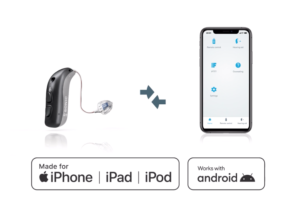
Some examples of events that a smart home can be programmed to alert a hearing-impaired homeowner are:
- Any alarm condition detected by a security system (intruder, smoke, carbon monoxide, water leak, etc.) In this instance, a color-changing bulb could be set to red for fire, blue for a water leak, etc. It should be noted that security notifications should not rely on cloud services or through smart hubs that rely on cloud services because of the risk of an internet outage, or other similar event, interrupting the communications path.
- When a doorbell is pressed. Many smart doorbells can be integrated with a smart home through IFTTT and provide visual cues through flashing and/or colored lights, a bed shaker, or by passing notifications along to the homeowner’s smart phone that is configured to vibrate when a notification is received. A hearing-impaired homeowner can even use lip reading to communicate with the person at the door. For example, a standard doorbell can be integrated with a smart home processor/hub using an ELK-930 Doorbell Detector tied to a digital input on the smart home processor/hub.
ELK-930 Doorbell Detector - A vibration sensor attached to an outside door can detect when someone knocks on the door and trigger a smart home processor / hub.
- Smart appliances can trigger a smart home processor/hub through IFTTT to flashlights, etc. when the laundry is done, the oven has reached its target temperature, the microwave has finished cooking, etc.
- Alexa can be used for both an alarm clock and for a kitchen timer. The IFTTT Alexa service includes triggers when an Alexa alarm goes off or an Alexa timer expires. These can then be routed to the smart home processor/hub for alternative notification of a hearing-impaired homeowner.
- Energy-sensing smart plugs can be used to develop notifications when an appliance is left on for too long. For example, a hearing-impaired homeowner might forget to turn off a garbage disposal because there is no visual indication that the device is running. Similarly, a hair dryer, that might cause a fire, could accidentally be left on.
Click here to read Jay Basen’s suggestions for enhancing smart homes for the visually impaired.




